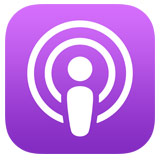Creating A Purpose-Driven IoT Business
Victoria Klug, Chief Culture Officer for Siemens’ newly founded IoT business, shares how she created a purpose that reaches beyond shareholder value. Her various HR and Leadership Development roles in Germany, the UAE, South Africa and the US taught her lessons on resiliency. She shares how she transferred her skills to lead the IoT business’ transformation.
The 3 Rules to Purpose-Driven IoT Business And Culture Transformation
Who are you? And what do your customers need?
– Yours, IoT
#1 Develop A Personal-Driven IoT Purpose
Everyone provides IoT in some way and with today’s global challenges, it’s key to create an IoT business purpose that reaches beyond ROI, Victoria says.
Shift from a profit-driven purpose to a personal-driven one that motivates employees to change the world.
Tap into the hearts of the employees and customers and engage in discussions that reach beyond functionality and ROI.
This isn’t obvious to every innovator and team member. We know that the world is changing. Why are we talking about it? were responses Victoria got as she led the Siemens IoT business team’s efforts to develop a personal-driven business purpose and IoT strategy. Invest time into building an understanding of why you must redefine your business purpose and strategy, she says. This requires patience, but it pays off.
Acknowledge the Past to Move Transformation Forward
Transforming a busines unit brings up uncertainty, anxiety, and sadness. Acknowledge the past and consider people’s emotions to move forward. If left unacknowledged, people risk getting stuck emotionally. Learn about your employees’ backgrounds. Recognize their pride in accomplishments. As acknowledge people’s feelings, and integrate the past people will feel heard and seen. This validation will smoothen the process of developing your business purpose and IoT strategy.
Making Someone Feel Heard Leads to Big-Thinking
When people feel heard, they’re able to move past emotional blockages and are enabled to think big. “Why We Need to Feel Heard” (The School of Life) discusses how to make someone feel heard: “the laws of psychology dictate that a crisis will immediately start to decline once a simple non-judgmental mirroring has taken place.” To validate a person’s feelings, use “magical phrases” such as, I can hear that you must… or You must be feeling so… or I can understand completely that… Applying these when engaging with people during change workshops provides a necessary sensibility to your efforts.
At Siemens, once Victoria acknowledged worries and people’s pasts she was able to take the next step in developing the business unit’s strategy. She challenged the team to think bigger: “What’s our mission? What kind of environment are we in? What are our values? What could our IoT business’ unique selling proposition (USP) be?” Big questions are difficult to answer. Enough time and including the customer into the process of creating the USP of your IoT business is key.
#2 Focus on Your Customer, not Technology
“IoT is a buzzword.”; focus on customer challenges to create a purpose-driven IoT business and turn the buzzword into meaningful solutions. Developing a sustainable solution that nails your customer’s biggest pain point takes time given the numerous possibilities of IoT. It helps to co-create with your customer as they often can’t describe what it is that they need.
What Drives Your Customer’s Business?
Ask yourself Where does my customer stand in her or his digitalization journey, what does she/he need? What’s driving my customer’s business?
Apply empathy to understand customer challenges and what is driving their business long term.
Refrain from jumping strait into ROI discussions when you first engage with customers. Try to explore their deep-rooted motives and desires. What pressure do they face? What are they trying to express? Bit by bit, you will uncover your customer’s dream solution, and you can go on a journey together to attain a shared dream.
Empathetic and Exploratory Resarch for Customer Insight
Empathetic and exploratory approach to research helps you gain insight on the most critical jobs as well as the pains and gains of customers. Strategyzer’s blopost “Starting With The Customer” explains how to start the innovation process with the customer and create personae to capture what you learned about him or her to understand what drives their business. Make sure you check that your services are important enough for the customers to want to pay for. The blogpost suggests including other assets (patents, technologies) into the innovation process if available. Answering to these questions are essential steps to start innovating your IoT business purpose and strategy.
As you go on to co-create your solution, you’ll need to hone experimental capabilities to handle the complexity. Say you want to digitize a hospital, e.g. There is no quick fix. You go from A to B, and B is always changing.
#3 Hone Experimental Capabilities
To manage complexity and accommodate a moving target during the creation of a purpose-driven IoT business, we must build experimental capabilities, not expertise, and start with small steps. Ask your customers in the beginning to think big and for the long term, and then remind them that you will start small. Embarking on a journey with customers and using iterative working modes is key to experimenting.
Experimenting brings clarity to complexity, not expertise.
In the past, engineers were good at solving complicated problems by using their expertise. Now, engineers must learn to test hypothesis and run experiments to see if an idea they think will succeed, fails. Experimenting is the only way to reduce complexity.
As you experiment you will encounter setbacks. Being resilient will help you move past these setbacks and keep you and your team going.
Increase Resilience to Manage Expectations and Setbacks
Work on your resilience and your success in leading the team through the changes of creating a purpose-driven IoT business is more likely. What is resiliency exactly during change?
Victoria faced a lot of chaos and uncertainty as she worked in countries with cultures different to hers such as South Africa or the United Arab Emirates. Things typically went against her expectations. Every new experience required a reset in expectations, because things weren’t predictable: “What’s my living situation going to be like? What’s my job really going to be?” She remembered one experience where her apartment was covered in mold and she had to find an entirely new living situation by herself. “It was a nightmare to come to after a long airplane ride.” Resiliency helped her get through the challenges of living abroad.
Practice Humility and Acceptance
Practicing humility and acceptance were Victoria’s strongest coping mechanism during her time spent abroad. When you face uncertainty during change and you practice humility you take your ego out of the equation. This helps you loosen your grip on your expectations of how things should be.
Embrace the unexpected in situations by replacing frustration with acceptance, trust, patience, and a positive mindset. This helped Victoria accept the amount of time the transformation demanded and helped her keep the team moving forward even in when they felt stuck.
Accepting the chaos and staying humble means you trust that things will work out.
Speak soon,
Helena
HOW TO SUBSCRIBE
Subscribe (it’s free) and keep up with me. You can download episodes you want on your device to listen to anytime, otherwise, just hit play.

 Apple Podcast
Apple Podcast
 Spotify
Spotify



 Helena Suter, A Lifelong Learner, Picture by
Helena Suter, A Lifelong Learner, Picture by  Bianca Witte
Bianca Witte